Postal card. Tarjeta postal. From Zionist propaganda to symbol of Resistence. De propaganda sionista a símbolo de Resistencia. ENG ESP
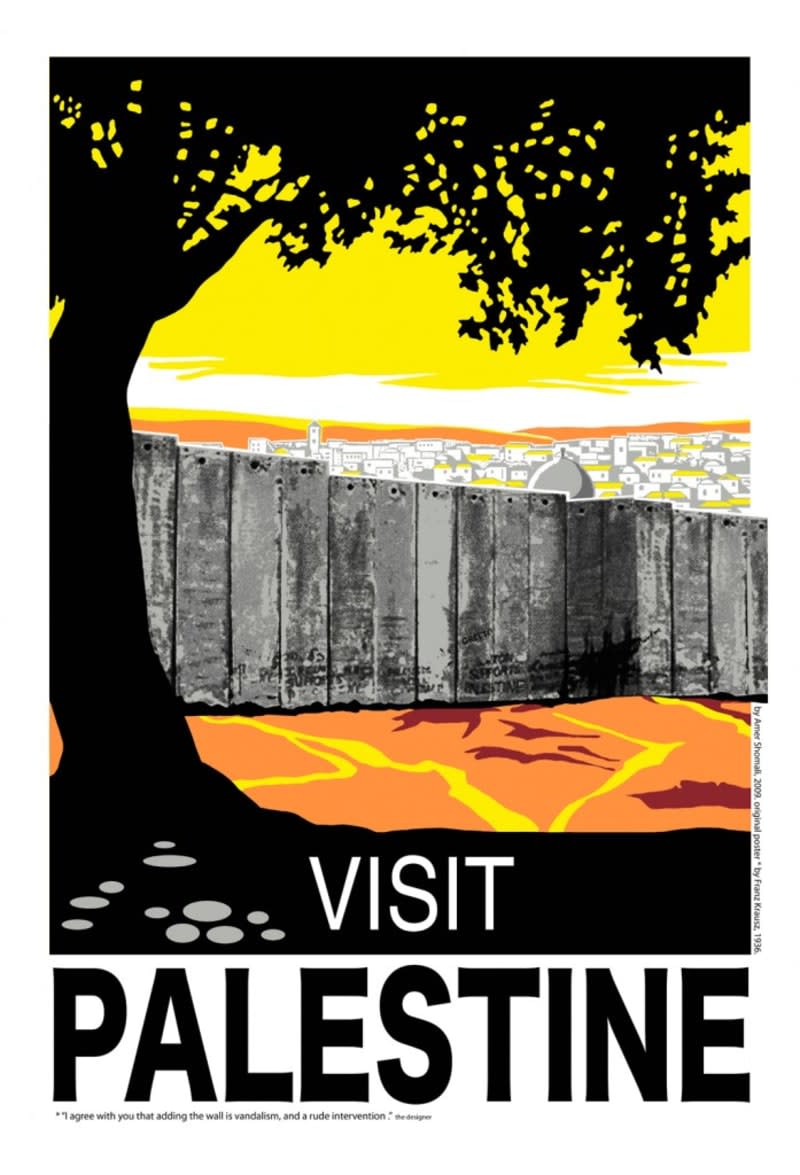
ENGLISH
How a Palestine Tourism Poster, Designed by a Jewish Artist in the 1930s, Took On New Meaning
By Chris A. Smith
Franz Krausz, 1936; published by the Tourist Development Association of Palestine.
The Palestine Poster Project Archives (PPPA)
In 1936, an Austrian Jew named Franz Krausz created this stylized view of Jerusalem’s Old City. Krausz, who fled Europe during Hitler’s rise, designed a variety of posters for Zionist groups encouraging Jewish immigration to the Holy Land. This one is particularly arresting: the ancient, low-slung city rendered in a warm-hued Mediterranean palette, crowned by the Dome of the Rock.
After the 1948 founding of Israel, most Israeli Jews quit referring to the land between the Jordan and the Mediterranean as ”Palestine.” The poster was more or less forgotten for decades. At the height of the Oslo peace process in the 1990s, however, a Tel Aviv graphic designer and activist named David Tartakover reprinted Krausz’s image. It was “a gesture of hope” for coexistence, according to Dan Walsh, the founder and curator of the Palestine Poster Project Archives.
As Oslo soured and the second Intifada broke out, Palestinians began repurposing the poster. The onetime Jewish recruiting pitch became an affirmation of Palestinian rights, hanging in coffee shops and government buildings all over East Jerusalem and the occupied territories. At times, the poster’s provenance led to confusion. “[M]any Palestinians and others have assumed or asserted that this poster could not have been made by a Zionist or Israeli both because it features the word ‘Palestine’ and the detailed image of the Dome of the Rock,” Walsh writes. “But both assumptions would be wrong.”
The poster has remained a symbol of Palestinian resistance over the intervening years, its usage changing in accordance with events on the ground. In a 2009 reinterpretation by Ramallah-based artist Amer Shomali, the separation wall between East Jerusalem and the West Bank blots out the view of the Old City; last year, the collective ABCNT added Israeli fighter jets on a bombing run. With violence again on the rise, there are likely to be more versions of this iconic image, tweaked for the times.
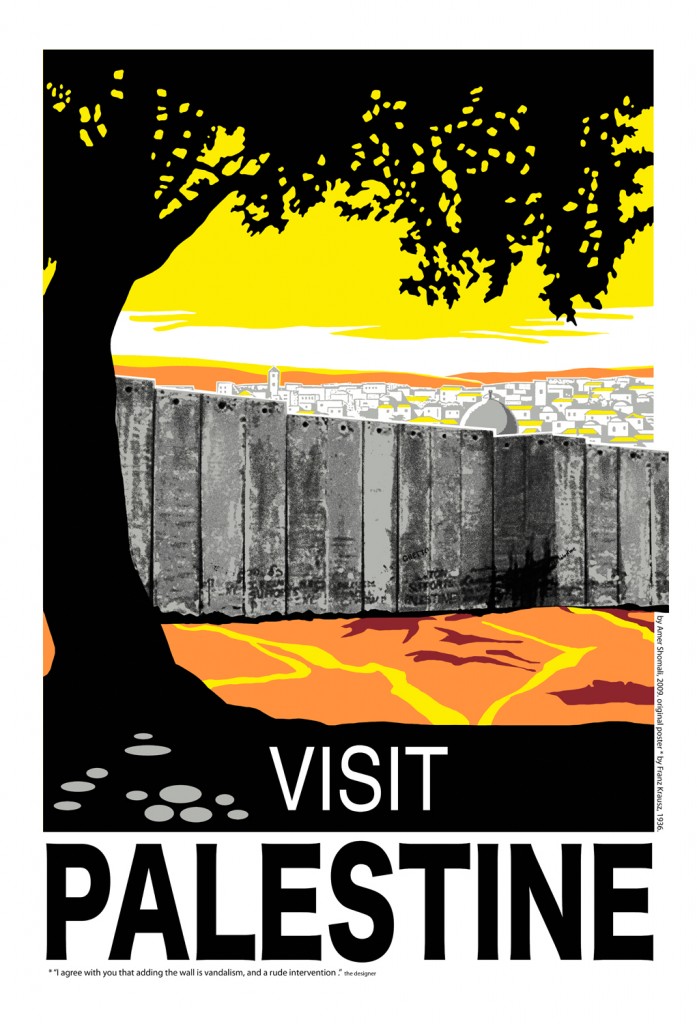
ESPAÑOL
Cómo un cartel turístico de Palestina, diseñado por un artista judío en la década de 1930, adquirió un nuevo significado
Por Chris A. Smith
Franz Krausz, 1936; publicado por la Asociación de Desarrollo Turístico de Palestina.
Archivos del Proyecto de Carteles de Palestina (PPPA)
En 1936, un judío austriaco llamado Franz Krausz creó esta vista estilizada de la Ciudad Vieja de Jerusalén. Krausz, quien huyó de Europa durante el ascenso de Hitler, diseñó diversos carteles para grupos sionistas que fomentaban la inmigración judía a Tierra Santa.
Este es particularmente impactante: la antigua ciudad de baja altura, representada en una paleta mediterránea de tonos cálidos, coronada por la Cúpula de la Roca. Tras la fundación de Israel en 1948, la mayoría de los judíos israelíes dejaron de referirse a la tierra entre el Jordán y el Mediterráneo como "Palestina".
El cartel quedó prácticamente olvidado durante décadas. Sin embargo, en pleno auge del proceso de paz de Oslo en la década de 1990, un diseñador gráfico y activista de Tel Aviv llamado David Tartakover reimprimió la imagen de Krausz.
Fue "un gesto de esperanza" para la coexistencia, según Dan Walsh, fundador y curador de los Archivos del Proyecto del Cartel de Palestina. Con el declive de Oslo y el estallido de la segunda Intifada, los palestinos comenzaron a reutilizar el cartel.
El antiguo anuncio de reclutamiento judío se convirtió en una afirmación de los derechos palestinos, colgado en cafeterías y edificios gubernamentales por todo Jerusalén Este y los territorios ocupados.
En ocasiones, la procedencia del cartel generó confusión. Muchos palestinos y otros han asumido o afirmado que este cartel no pudo haber sido realizado por un sionista o un israelí, ya que incluye la palabra 'Palestina' y la imagen detallada de la Cúpula de la Roca —escribe Walsh—
Pero ambas suposiciones serían erróneas. El cartel se ha mantenido como símbolo de la resistencia palestina a lo largo de los años, y su uso ha ido cambiando según los acontecimientos sobre el terreno.
En una reinterpretación de 2009 del artista Amer Shomali, residente en Ramala, el muro de separación entre Jerusalén Este y Cisjordania impide la vista de la Ciudad Vieja; en 2014, el colectivo ABCNT añadió aviones de combate israelíes en un bombardeo.
Con el aumento de la violencia, es probable que surjan más versiones de esta imagen icónica, adaptadas a los nuevos tiempos.
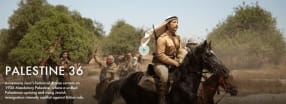
"Palestine 36". Film. Pelicula. Directed by Annemarie Jacir ENG ESP
Publicado hace 4 días.
'Palestina, la existencia negada' Ensayo. Teresa Araguren
Publicado hace 5 días.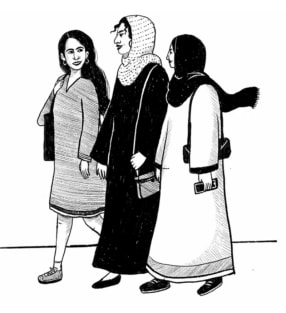
Rama Duwaji. Syriam cartoonists. Dibujante siria. ENG ESP
Publicado hace 8 días.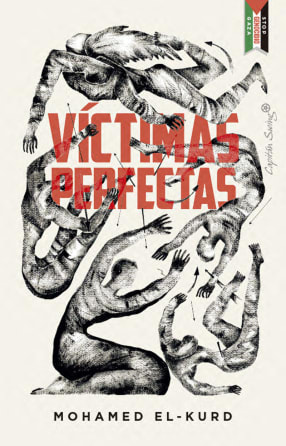
"Víctimas perfectas". Ensayo. Mohamed El-Kurd
Publicado hace 12 días.
Gaza 'scholasticide'. "Escolicidio" en Gaza ENG ESP
Publicado el 27 de octubre.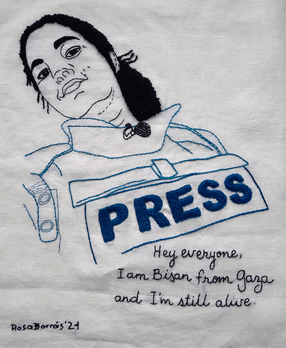
Videos “It’s Bisan from Gaza and I’m Still Alive”. "Soy Bisan, desde Gaza, y sigo viva". ENG ESP
Publicado el 21 de octubre.
Pictures. C-section post-morten: Israel murdered his mother, father and three brothers. Fotografías. Cesárea postmorten: Israel asesinó a su madres, su padre y sus tres hermanos. ENG ESP
Publicado el 20 de octubre.
2 Nov 2025. Balfour Declaration. Cinema Day. Día de cine palestino, 2 nov 2025. ENG ESP
Publicado el 14 de octubre.Ver más / See more



